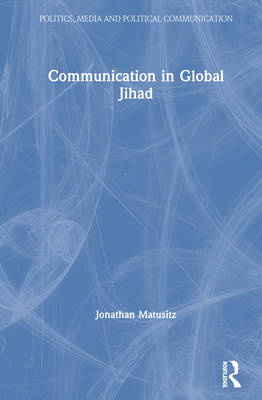
- Afhalen na 1 uur in een winkel met voorraad
- Gratis thuislevering in België vanaf € 30
- Ruim aanbod met 7 miljoen producten
- Afhalen na 1 uur in een winkel met voorraad
- Gratis thuislevering in België vanaf € 30
- Ruim aanbod met 7 miljoen producten
Omschrijving
This book conceptually examines the role of communication in global jihad from multiple perspectives. The main premise is that communication is so vital to the global jihadist movement today that jihadists will use any communicative tool, tactic, or approach to impact or transform people and the public at large. The author explores how and why the benefits of communication are a huge boon to jihadist operations, with jihadists communicating their ideological programs to develop a strong base for undertaking terrorist violence. The use of various information and communication systems and platforms by jihadists exemplifies the most recent progress in the relationship between terrorism, media, and the new information environment.
For jihadist organizations like ISIS and Al-Qaeda, recruiting new volunteers for the Caliphate who are willing to sacrifice their lives for the cause is a top priority. Based on various conceptual analyses, case studies, and theoretical applications, this book explores the communicative tools, tactics, and approaches used for this recruitment, including narratives, propaganda, mainstream media, social media, new information and communication technologies, the jihadisphere, visual imagery, media framing, globalization, financing networks, crime-jihad nexuses, group communication, radicalization, social movements, fatwas, martyrdom videos, pop-jihad, and jihadist nasheeds.
This book will be of great interest to students and scholars of communication studies, political science, terrorism and international security, Islamic studies, and cultural studies.
Specificaties
Betrokkenen
- Auteur(s):
- Uitgeverij:
Inhoud
- Aantal bladzijden:
- 242
- Taal:
- Engels
- Reeks:
Eigenschappen
- Productcode (EAN):
- 9780367617073
- Verschijningsdatum:
- 26/11/2020
- Uitvoering:
- Hardcover
- Formaat:
- Genaaid
- Afmetingen:
- 163 mm x 234 mm
- Gewicht:
- 498 g

Alleen bij Standaard Boekhandel
Beoordelingen
We publiceren alleen reviews die voldoen aan de voorwaarden voor reviews. Bekijk onze voorwaarden voor reviews.











